Fire, Ashes, Fear: Bushwick in the 1980s by Meryl Meisler
It just didn’t seem right. Why would a teacher leave a full-time post just before Christmas? Everyone knew Bushwick was dangerous. Was the teacher even alive? Had she been…killed?
Thus begins Meryl Meisler‘s artist statement, but in 1981 it was a real concern. She’d already had a camera stolen-not on the street, but in a classroom where she taught on the Lower East Side. But Bushwick, an area in north Brooklyn bordering on Bedford-Stuyvesant and Brownsville, was worse. Tourist guides left it out. No one wanted to go there. Meisler hesitated, but fearing she would slide down the Department of Ed. list, took the job.
In 1981 fear ran through the city. Dark days lay behind (the ’77 blackout, near bankruptcy, crime), and dark days lay ahead (more crime, AIDS, and crack cocaine). Every section was on edge, but some were worse than others. Bushwick was bad.
Its trip down had begun in the 1960s when working class families migrated to the suburbs, replaced by poorer families displaced by well-intentioned urban renewal projects elsewhere. As light industry and breweries vanished, so did jobs. There were Federal Housing Administration schemes, schemes by greedy landlords, and redlining by banks that stopped the flow of money to residents. Landlords torched buildings for insurance money and oust tenants, and kids torched buildings because there was nothing else to do. Fire was a deadly, ever-present threat. The number of Welfare recipients rose, and by 1977, 80% of the population was unemployed. Infant mortality rates were the highest in the city, schools were overcrowded, drugs were rampant and dropout rates were high.*
Many of the problems were citywide. From 1973 to 1976, New York lost 340,000 jobs,** and in 1975 came close to bankruptcy. 1976 saw the worst crime stats ever, as well as the debut of New York’s infamous serial killer, Son of Sam. How bad could it get?
Worse. On July 13th 1977, Meryl Meisler and a friend were planning to boogy down at Studio 54 to the throbbing disco beat of Donna Summer and KC & the Sunshine Band. But any sunshine New York had was fading fast and it was about to get very, very dark. At 8:37 p.m., lightening struck power lines at a substation in Westchester, triggering a short.*** As Con Ed managers struggled and failed to readjust electrical loads, lights winked out all over the metropolitan area. As Meisler and her friend pedaled uptown, the night seemed to grow increasingly thick. By the time they reached Studio 54, it was closed, and a great darkness-vast, enveloping and complete-had settled like a shroud over the City of New York.
Bushwick was the epicenter of chaotic looting that began and lasted into the next day. In the main shopping district along Broadway (named after Manhattan’s famous avenue), stores were cleaned out and many set on fire. When the anger and darkness and burning were through, Bushwick, an area that had clung to its working class identity, lay in ruins.
For New York, the blackout was rock bottom, the moment when all the terrible trends snowballed into one giant, awful photo op that the world, the country and the city itself could no longer deny or turn away from. Something-many things-had to be done.
When Meryl Meisler accepted the job in 1981, Bushwick had cooled down and settled into its role of urban ghost town. Photographic series exploring urban decay often feature great swaths of graffiti-covered brick, but in Bushwick, many of the walls that could have been written on simply weren’t there. Looking at Meisler’s pictures, the first thing that strikes you is the amount of rubble. It’s everywhere, all over the place-blocks and blocks of it-pierced only by an occasional tottering facade or low cluster of houses that seem to lean against each other for support. There is a sense of eerie quiet, almost peace; you feel the images were taken in some strange and distant ruined city, not a few miles from the financial center of the world.
Meisler took it all in with an unflinching eye. There were ruins that rivaled anything from ancient Rome, light unhampered by skyscrapers and very often the lack of any walls at all. The surviving structures “whispered stories” and seemed to be “waiting for their portraits.” She obliged. There were also street scenes reminiscent of small town life, and local characters who despite their poverty, conveyed a lively sense of joy.
Using a low-cost point-and-shoot camera with cheap slide film, Meisler began photographing on her way from the subway to the school, then back again on her way home. She was polite, always asking permission if people were present. When Adam Schwartz was planning a show on Bushwick in 2006, her name came up, and she began digging out the little boxes of slides, of which there are nearly two hundred.
They weren’t in great shape. There were color shifts, nicks, and green spots that surely were mold. She began digitizing, then used Photoshop to color correct and clean up flaws. Which, she believes, didn’t change the reality. Initially she outsourced the printing, but now handles it herself. “I am a printer’s daughter,” she says, “no one could be as obsessive about them as yours truly.€
Looking at the thirty-five images in the show, it’s easy to forget Meisler had a day job, but she did, and took it very seriously. She has won many awards, including a Disney American Teacher Award, an Adobe Youth Voices Grant, a Chase Active Learning Grant, and a New York Foundation For The Arts Fellowship. She also started a photography program at I.S. 291, integrating “the children’s personal stories, health topics and…the history of the neighborhood.€ Students’ work was exhibited in storefronts, parking lots, and projected onto building walls in addition to being shown alongside the work of famous artists in galleries and museums.
Till the blackout, Bushwick wasn’t on anyone’s radar. The focus always seemed to be someplace else, generally the Bronx, which drew the photo ops and attention of presidential hopefuls like Jimmy Carter. But after the blackout, with a mayoral election looming, Bushwick came to the fore. Prodded by extensive New York Daily News coverage, democratic frontrunners Ed Koch and Mario Cuomo pledged to rebuild the decimated housing stock. According to John Dereszewski, then District Manager of the Bushwick Community Board, it was a huge challenge: ”I remember walking through the area and tripping over the ground and wondering ‘what the hell am I doing here?’ Was it hopeless?€
The answer is no, but its rebirth has been a long, tough slog, that isn’t over. Redevelopment started, slowly, but the Koch administration began an immediate demolition program to clear abandoned buildings, which made making the area safer and less demoralizing. Trees were planted, and through community involvement and pressure, the housing that was built was in keeping with the low-rise nature of the neighborhood.**** In recent years, with affordable rents, Bushwick has become more attractive, and cafes, bars and galleries have opened.*****
Artists arrived, often partnering with local institutions. Photographer Daryl-Ann Saunders was one of twelve who set up studios in a local senior center. She had already begun a portrait series, Pioneers of Bushwick, and found that the pairing gave her an “in€ with the local residents.******
And Meisler, now an Adjunct Instructor at NYU, plans to go back in 2012 to “photograph the change, but more important, the character and special Americana that is also Bushwick-people living, laughing, enjoying and embracing the challenges of life.€
At some point on her journey she also learned that her predecessor, the teacher presumed dead, was alive and well and working nearby in Bushwick.
Meisler’s series Here I Am: Bushwick in the 1980s is on view at Soho Photo Gallery, 15 White Street, through December 31st.
- Catherine Kirkpatrick, Archives Director
Notes:
* Mahler, Jonathan, The Bronx in Burning, Picador, 2006, pages 206 – 213
** Mahler, Jonathan, The Bronx in Burning, Picador, 2006, page 224
*** Mahler, Jonathan, The Bronx in Burning, Picador, 2006, pagse 178-179
**** John A. Dereszewski, Bushwick Notes: From the 70′s To Today, and phone interview
***** T. Paul Cox, e-mail comments
******Daryl-Ann Saunders, e-mail comments
(Sorry-couldn’t get the superscript working in WordPress!)


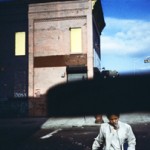
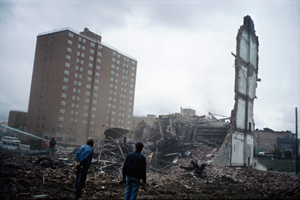
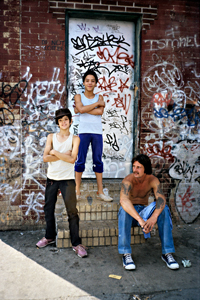
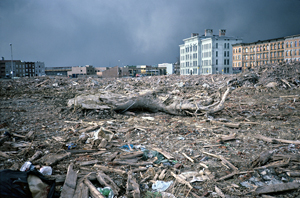
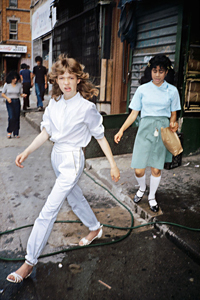
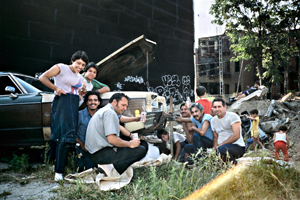
Hi Catherine Kirkpatrick,
Really nice blog. your post Fire, Ashes, Fear: Bushwick in the 1980s by Meryl Meisler … is very interesting. Thanks for sharing.
[WORDPRESS HASHCASH] The poster sent us ’0 which is not a hashcash value.
But there is a key word missing from the title of this review: HOPE.
When I first saw Meryl’s photo of a lone, abandoned building, gutted, in a snowstorm, it literally took my breath away. If there is such a thing as “terrible beauty”, this was the apotheosis of it.
And there is indeed much “terrible beauty” in the shots presented in the display – from the magnificent Ansel Adams tribute, where destruction is portrayed at all levels, in all forms, from the personal (the empty soda bottles) to the historical (the brick and mortar rubble, to the “beached whale” tree trunk in the center, the ominous gray sky creating a vortex down into the scene, like Moby Dick’s after the destruction of the Pequod (it is odd – the elements in the composition form an almost precise golden triangle… except that it’s upside down…); to the heartbreaking tableau of a candy store striding the gates of both innocence (“school supplies”) and profanity (above two deep dark doors is the word “Gates”; it may have well read “Abandon all hope…”).
And yet hope is not abandoned – because there are people in these pictures as well. And in every one, you cannot mistake the hope in their faces – not anger, not despair – Hope.
The toddler standing astride the broken sidewalk in full martial regalia, the little girl’s uncomplicated innocence framed against the topless calendars held by other slightly older girls, the young children at joyous play, despite an almost Guernica-like backdrop of a rotting car. Behold, even in the “Family Picnic” included above, the face of the young woman on the left, the men huddled in front of the car, the children at play in the rubble, is there anything but optimism there? Look at the man who stares out at you, his long dark locks flowing – it is the unalloyed beatitude of enthusiasm, of joy… of hope.
As I stared at shot after shot of rubble, destruction, abandonment, nonetheless I could not help but feel – be inspired by – the unaccountable hope that beamed from the faces of those condemned to call this Bosch-like landscape “home”. And as their reaffirmation, their encouragement captured me, I couldn’t help thinking of the last lines of Yeats’ Lapis Lazuli:
One asks for mournful melodies
Accomplished fingers begin to play
Their eyes, mid many wrinkles, their eyes
Their ancient glittering eyes
Are gay…
[WORDPRESS HASHCASH] The poster sent us ’0 which is not a hashcash value.
I’m not really that much of a on-line viewer really however your blog particularly good, keep it up! I’ll bookmark the blog and revisit later. Cheers.